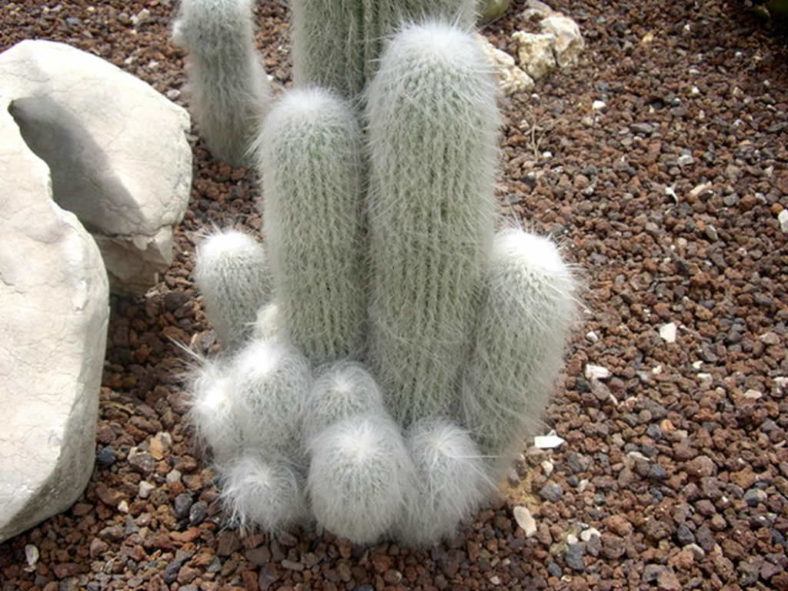Cephalocereus senilis, commonly known as Old Man Cactus, is one of the most popular and identifiable members of the Cactus family. It is native to Mexico in areas such as Guanajuato and Hidalgo, located in the east. The fine white hairs cover the entire fleshy columnar body and hide the sharp spines. Aside from its charm, the hair serves an important purpose. It protects against the harsh desert sun common to this plant's native home.
Growing Conditions
This cactus can go outside in USDA Plant Hardiness Zones 9 and 10. Native to Mexico, it needs hot, dry climates and bright sunlight. The plant uses long hair to keep itself cool in its natural habitat. As an outdoor plant, it can get 45 feet (13.7 m) tall but is generally slow-growing as a potted plant.
Old Man Cactus is mainly grown as a houseplant. It stays small and is easily kept in a container for its entire life. Indoor cactus growing requires a sunny window and temperatures of at least 65 ˚F (18 ˚C). For best growth, give it a winter hibernation period below 65 ˚F (18 ˚C).

General Care
For indoor cactus growing, use a cactus mix or blend of sand, perlite, and topsoil. Also, use an unglazed pot for Old Man Cactus. This will allow the pot to evaporate any excess moisture. Old Man Cactus likes its soil on the dry side. Overwatering is a common cause of rot and disease.
Allow the top few inches of the soil to dry out completely between waterings. Then, in winter, reduce watering to once or twice during the season.
Fertilize with cactus food in early spring, and you might be rewarded with thick pink flowers. This cactus grows a pinkish-red fruit in its natural habitat, but this is rare in cultivation.
Old Man Cactus needs a sunny, warm location but has few other needs. You should watch it carefully for pests that can hide in its hair. These include mealybugs, scales, and flying pests.
Propagating
Old Man Cactus is easy to propagate from seeds and cuttings.
Seeds take a long time to grow into something recognizable as a cactus, but it is a cheap and fun project.
Cuttings need to lie on the counter in a dry location for a couple of days to callus. Then, insert the cut end with the dry, white callus into a soilless medium, such as sand or perlite. For best rooting, keep the cutting in moderate but not scalding light where temperatures are at least 70 ˚F (21 ˚C). Do not water until the little cutting has been rooted. Then, treat your new Old Man Cactus as you would a mature specimen.
Source: gardeningknowhow.com
Links
- Back to genus Cephalocereus
- Succupedia: Browse succulents by Scientific Name, Common Name, Genus, Family, USDA Hardiness Zone, Origin, or cacti by Genus